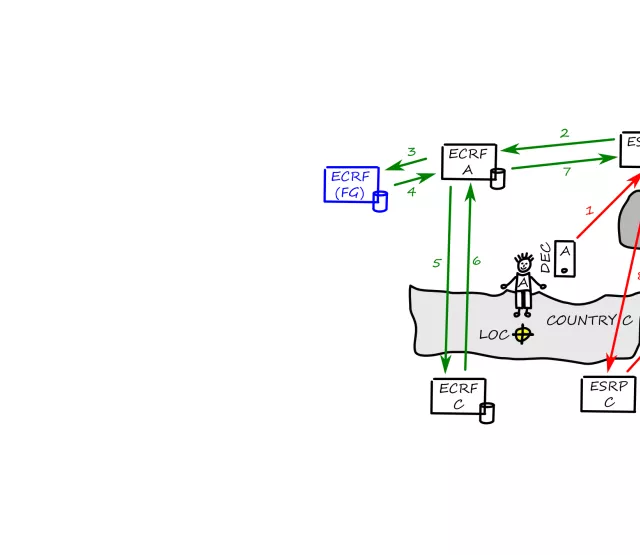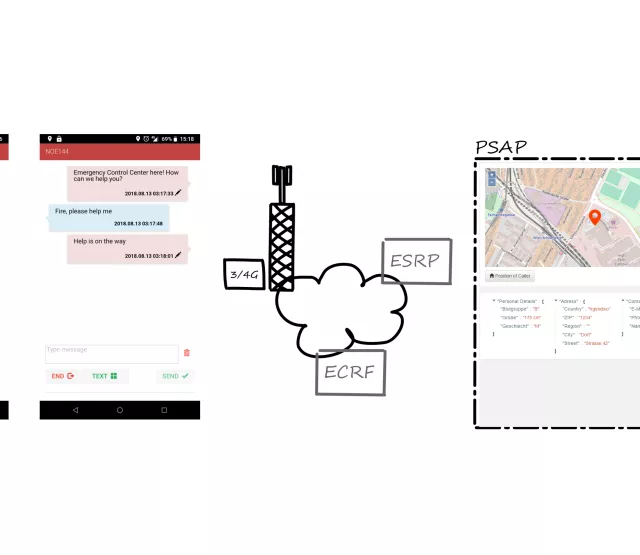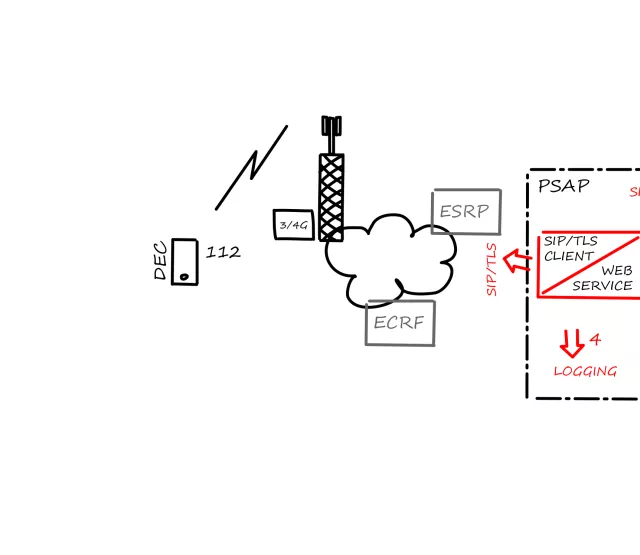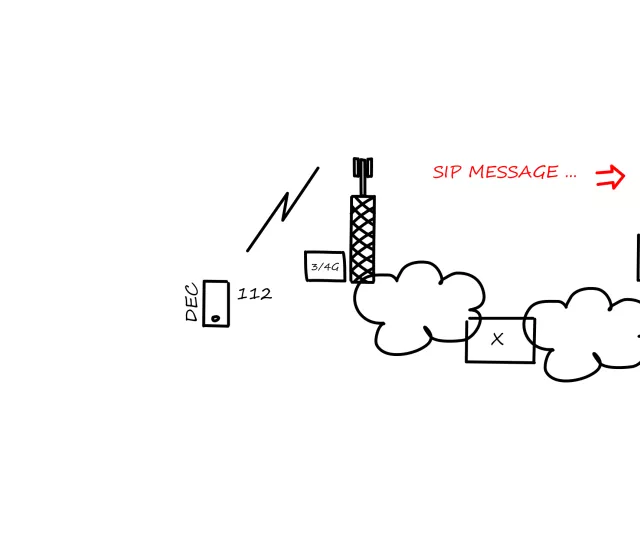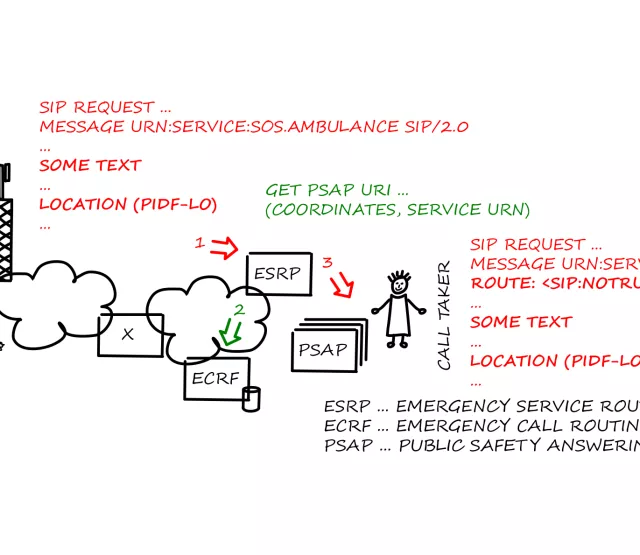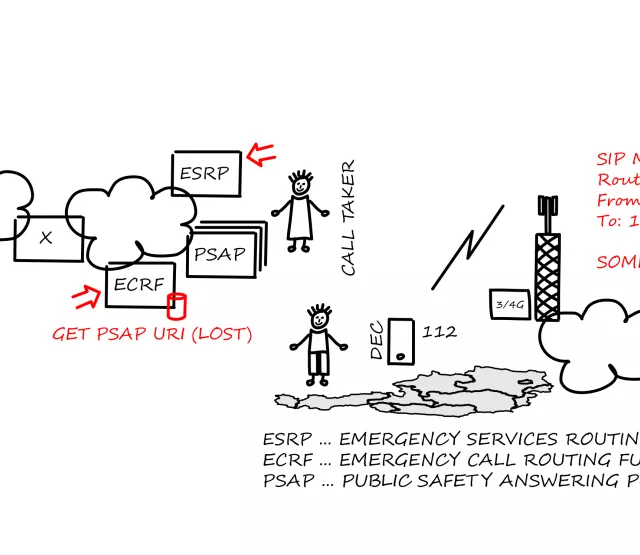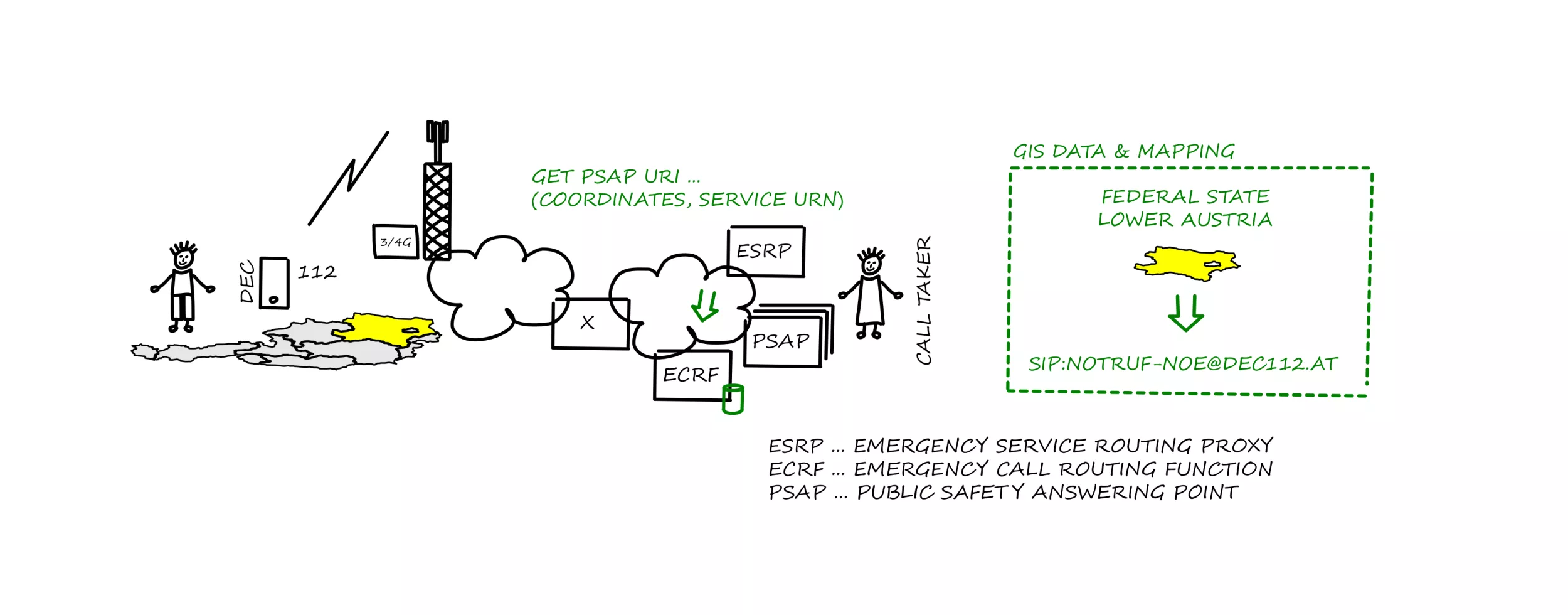
Förderjahr 2017 / Project Call #12 / ProjektID: 2347 / Projekt: DEC112
An ECRF, an NG112 functional element, is a LoST protocol server where location information (e.g. coordinates) and a service URN serve as input to a mapping function that returns a URI used to route an emergency call.
The previous blog introduced the ESRP, but to understand how NG112 works we need to introduce another element, the Emergency Call Routing Function (ECRF). The ECRF comprises a Geographic Information System (GIS) enabled component used for storage, retrieval, mapping, and analysis of geographic data. Geographic data may include digital map layers representing the real world using points, lines, and polygons, as well as aerial and satellite imagery (refer to free consumer services such as Google™, Microsoft Bing™ maps, or OpenStreetMap).
The DEC112 open source ECRF is provisioned with GIS data depicting Austrian PSAP service areas (jurisdiction) that are polygons of Austrian federal states and counties. A LoST request provides coordinates of a calling party to be intersected with the PSAP boundary polygon map, which further provides the SIP address to the ESRP for routing purposes. That is why a calling party does not need to know the SIP address of the correct PSAP - nearest to or responsible for the location where the emergency call originates. Indeed, the calling party just selects the required service (ambulance, fire, police …) and the DEC112 App gets the current location and both are used as input to query the ECRF.
The ECRF is a specific element of a LoST hierarchy (defined in RFC 5582) named authoritative mapping server (AMS). Such a server provides the authoritative answer to a region described by a geometric shape. Assuming large areas or international coverage, other elements may be considered in addition and are listed as follows:
- Seeker: a seeker is a LoST client requesting a mapping. A seeker does not provide mapping services to others, but may cache results for its own use.
- Resolver: a resolver is contacted by a seeker, may consult a forest guide, and then resolves the query using an appropriate tree. Resolvers may cache query results.
- Forest guide: a forest guide (FG) has knowledge of the coverage region of trees for a particular top-level service.
- Tree: A tree consists of a self-contained hierarchy of authoritative mapping servers (ECRF) for a particular service. Each tree exports its coverage region to the forest guide.
To summarize, DEC112 implements a simple LoST hierarchy that includes a LoST seeker (ESRP) and an authoritative mapping server (ECRF). How DEC112 may be deployed internationally using a LoST hierarchy will be discussed in a future blog.


